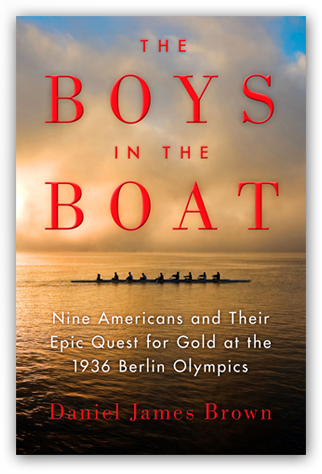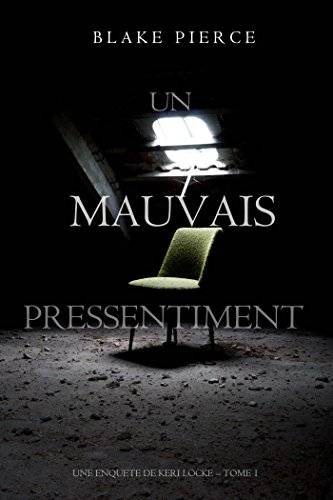Sometimes – too rarely, I’m afraid – we read a book that haunts us. Envelopes us in its cadence and rhythm, its words and images, and we barely realize we’re reading until suddenly, we’re at the end. Bereft. Left staring at the bookshelves, knowing that no matter what book we choose to read next, it will be unfair – because that book, no matter how good, will simply not be able to compete with the book we’ve just finished.
I’m at that point now.
 I just finished Daniel James Brown’s The Boys in the Boat – Nine Americans and Their Epic Quest for Gold at the 1936 Berlin Olympics. In fact, I was up until 1 this morning finishing it.
I just finished Daniel James Brown’s The Boys in the Boat – Nine Americans and Their Epic Quest for Gold at the 1936 Berlin Olympics. In fact, I was up until 1 this morning finishing it.
There are so many things I want to say about this book. So many, many good things I want to say about this book. Including how much I love that gorgeous, magical cover. I will try to keep it brief.
As a historian, I love what is commonly called ‘popular history,’ as long as it’s well-written and well-researched. Anything that gets people excited and interested and longing to know more is a plus, in my book. Most of us have heard of Jesse Owens, who famously won the gold medal at the 1936 Berlin Olympics, defeating the top-ranked Nazi runners – and sticking it to Hitler’s grand plan. But most of us don’t know about the rest of the Berlin Olympics and the other athletes who participated – and won. This book is the story of the eight-man rowing crew from the University of Washington, who fought tooth and nail for three years to earn their right to go up against the best in the world.
I can hear you now – rowing? What’s that? In a boat? Yes. Rowing. Eight men, plus a coxswain, in a hand-built racing shell, rowing together. Look. It doesn’t matter if you don’t know anything about rowing, because Brown will take you through it all, tell you everything you need to know – and do it in a way that leaves you with a sudden realization, a few hours later, that he taught you something, and you were so enthralled with the story that you didn’t even know you were learning.
So no. It doesn’t matter if you don’t know a thing about rowing. I didn’t. And it didn’t matter. Brown tells you everything you need to know, so that by the time he describes the races, he doesn’t have to explain anything, again. He can just tell the story, in his masterful, flowing way. It doesn’t matter if you’ve never even seen a race, because by the time Brown is done, you will have – in your mind. Brown’s writing is beautiful, ethereal. He has the ability to put words to paper that come to life, so that the reader isn’t even aware of the words on the page – all they’re aware of is the images unfolding in their mind, a movie reel of the imagination. Take, for instance, this passage:
Bobby Moch set the varsity boys to rowing at a leisurely twenty-two or twenty-three. Joe and his crewmates chatted softly with the boys in the other two boats. but they soon found that they had pulled out ahead without meaning to, just pulling soft and steady . . . And then, one by one, they realized that they couldn’t hear anything at all except for the gentle murmur of their blades dipping into and out of the water. They were rowing in utter darkness now. They were alone together in a realm of silence and darkness . . . Bobby Moch recalled, “You couldn’t hear anything except for the oars going in the water . . . it’d be ‘zep’ and that’s all you could hear . . . the oarlocks didn’t even rattle on the release.” They were rowing perfectly, fluidly, mindlessly. They were rowing as if on another plane, as if in a black void among the stars, just as Pocock had said they might. And it was beautiful.
This is not a book about rowing, per se. This is a book about the humans in the boat, and the humans behind the boat. This book is about the nine-man crew – Joe Rantz, Don Hume, Bobby Moch, Stub McMillin, Roger Morris, Gordon Adam, Chuck Day, George Hunt, and John White, Jr. But it’s also about their coaches, Tom Bolles and Al Ulbrickson. It’s about George Pocock, a master craftsman who designed and built all of Washington’s racing shells. It’s about their families and girlfriends, and it’s about the 1930s.
Perhaps one of the reasons why I fell in love with this book so much is because I could, on a deep, almost instinctive level, relate to it. One of the themes of the book is teamwork – becoming not part of a team, but nine people and a racing shell rising above everything that makes them individuals to become something more, something greater, something else. I ride dressage. The principle’s the same. When I’m in the saddle, the horse and I are partners. There is constant communication between us, and when you become so in tune with each other than the rest of the world fades away, and you can feel each footfall, feel the horse’s mouth playing with the bit, the reins a live thing in your hands . . . it’s a feeling you can’t find anywhere else. It’s up to the rider to make the communication happen, every second of every ride. It’s 100% focus, 100% of the time. But eventually . . . you reach a place where, when you get into the saddle, you and the horse just know. You’ve transcended being horse and rider, and become that something else. This is precisely the feeling that top rowing teams have – each man in that boat is in perfect tune with every other man. Individuality slips away. They become one, with each other and the shell.
Another thing I loved about this book – it’s a master class in structure. Brown realizes that this story is larger than the nine boys in the boat. It’s larger than the rivalry with California, and the coaches. It’s emblematic of an era. Laura Hillenbrand does this quite well in her books (Seabiscuit and Unbroken), and Brown gives us the backdrop of the 1930s – both in the US and Germany – in unflinching, poetic detail. Brown looks at Nazi Germany and the creation of the ’36 Olympics, interspersing the story of Leni Riefenstahl (Hitler’s personal movie-maker), and her rivalry with Josef Goebbels, along with the efforts to ‘cleanse’ Germany of anything that might reflect poorly on it. Both stories are told, side by side. You understand what’s at stake for everyone.
I could go on about this book. Yes, this book was published in 2013. Yes, it’s been sitting in my ‘to read’ pile for about six months. YES, I am sorry I didn’t read it earlier – though truth be told, I probably needed to be able to sit down with it when I was on break, and could really devote myself to the story, without distractions.
Please. Do yourself a favor. Go read this book. Now.
In the meantime, I’ll be staring at my bookshelf. Bereft.
Advertisements Share this:




